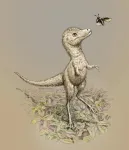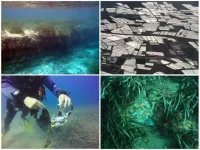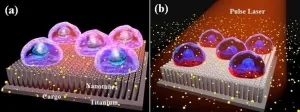(Press-News.org) Greater sports participation among Aboriginal and Torres Strait Islander children is linked with better academic performance, according to new research from the University of South Australia.
Conducted in partnership with the University of Sydney and the University of Technology Sydney, the world-first study found that Aboriginal and Torres Strait Islander children who played organised sports every year over four years, had numeracy skills which were advanced by seven months, compared to children who did less sport.
The study used data from four successive waves of Australia's Longitudinal Study of Indigenous Children, following 303 students (with a baseline age of five to six years old) to assess cumulative sports participation against academic performance in standardised NAPLAN and PAT outcomes.
Sports participation has been linked with better cognitive function and memory in many child populations, but this is the first study to confirm the beneficial association between ongoing involvement in sport and academic performance among Aboriginal and Torres Strait Islander children.
Lead researcher, UniSA's Dr Dot Dumuid, says the study highlights the importance of sports as a strategy to help close the gap* for Australia's first nations peoples.
"Playing sport has always had strong cultural importance to Aboriginal and Torres Strait Islanders, so understanding how sports can boost numeracy among Indigenous children is a valuable step towards improving health and reducing disadvantage," Dr Dumuid says.
"When children play sport, they're learning the social structures of a team, how to work within rules, how to focus their attention, and key strategies for success.
"Interestingly, when children play sport, they're not only activating parts of the brain that are involved in learning, but they're also inadvertently practising mathematical computations such as 'how much time is left in the game?' and 'how many points do we need to win?', and it's this that may well be contributing to improved numeracy."
Aboriginal and Torres Strait Islanders comprise a relatively large proportion of athletes in Australia's leading sports teams. While only representing about three percent of the population, they make up nine percent of AFL players, and 22 per cent of State of Origin players.
Encouraging sports in Aboriginal and Torres Strait Islander communities could have many other benefits for health and wellbeing, says co-researcher and Professor of Indigenous Health Education at UTS, John Evans.
"Playing sport creates a sense of belonging, and builds self-esteem, coherence and purpose," Professor Evans says.
"This is especially important for people living in rural and remote areas where opportunities for social interaction and structured activities can be limited.
"If we can find ways to encourage greater participation among Aboriginal and Torres Strain Islander communities, while removing key barriers - such as financial costs and lack of transport - we could promote healthier living, more cohesive societies while also and boosting academic performance among Indigenous children."
INFORMATION:
Notes to editors:
* Australian Curriculum, Assessment and Reporting Authority (ACARA) numeracy statistics report 83.1 per cent of Indigenous students in year three met the national minimum standard for numeracy in 2018, compared with 96.7 per cent of non-Indigenous students.
Media contact:
Annabel Mansfield
T: +61 8 8302 0351
M: +61 417 717 504
E: Annabel.Mansfield@unisa.edu.au
Lead researcher:
Dr Dot Dumuid
E: Dot.Dumuid@unisa.edu.au
M: 0402 455 470
A world-first discovery by researchers at Monash University and The University of Queensland could lead to faster and more effective treatments for chronic health complications, such as cardiovascular disease and cancer, with 'fluorescent' in vivo biosensors.
The research team, led by Dr Simon Corrie from Monash University's Department of Chemical Engineering and the ARC Centre of Excellence in Convergent Bio-Nano Science and Technology, took an antibody that binds EGFR (epidermal growth factor receptor) proteins and engineered it to monitor the concentration of EGFR proteins in serum solutions over time.
Co-authors of the paper, published in ACS Sensors, are Dr Christian Fercher, Dr Martina ...
They are among the largest predators ever to walk the Earth, but experts have discovered that some baby tyrannosaurs were only the size of a Border Collie dog when they took their first steps.
The first-known fossils of tyrannosaur embryos have shed light on the early development of the colossal animals, which could grow to 40 feet in length and weigh eight tonnes.
A team of palaeontologists, led by a University of Edinburgh researcher, made the discovery by examining the fossilised remains of a tiny jaw bone and claw unearthed in Canada and the US.
Producing 3D scans of the delicate fragments revealed that they belonged to baby tyrannosaurs ...
Scientists from UNSW Sydney have developed a ceramic-based ink that may allow surgeons in the future to 3D-print bone parts complete with living cells that could be used to repair damaged bone tissue.
Using a 3D-printer that deploys a special ink made up of calcium phosphate, the scientists developed a new technique, known as ceramic omnidirectional bioprinting in cell-suspensions (COBICS), enabling them to print bone-like structures that harden in a matter of minutes when placed in water.
While the idea of 3D-printing bone-mimicking structures is not new, this is the first time such material can be created at room temperature - complete with living cells ...
The carbon footprint of plastic production for initial use is greater than the global warming impact of the entire process used for medical device reprocessing Use of reprocessed devices is environmentally superior to use of original products in 13 of 16 categories evaluatedReprocessing found to advance "circular economy," a key strategy for reaching the UN Sustainability GoalsLCA offers evidence showing that in order to reduce greenhouse gas emissions and honor the Paris Climate Agreement, EU Member States must opt-in to EU Medical Device Regulation (MDR)'s reprocessing/remanufacturing provisions
[Berlin / Washington, ...
Large-scale production of vegetables and fruit in Spain with intensive plastic consumption in its greenhouse industry is believed to have leaked microplastic contaminants since the 1970s into the surrounding Mediterranean seagrass beds. This is shown in a new study where researchers have succeeded in tracing plastic pollution since the 1930s and 1940s by analyzing seagrass sediments.
About half of Sweden's cucumbers and a fifth of the tomatoes in Sweden are currently imported from Spain according to the Swedish Board of Agriculture. A special area in Spain where large-scale vegetable cultivation ...
Overview:
A research team at the Department of Mechanical Engineering at Toyohashi University of Technology developed a nanosecond pulse laser-assisted photoporation method using titanium-oxide nanotubes (TNTs) for highly efficient and low-cost intracellular delivery. The proof of concept for the possibility of intracellular delivery after irradiation with nanosecond pulse laser on TNTs was validated. TNTs were formed on titanium sheets using the electrochemical anodization technique at different voltages and times. HeLa - human cervical cancer cells were cultured in the nanotubes and submerged in a solution of biomolecules. After cells were exposed to nanosecond pulse laser, we successfully delivered ...
There isn't much in Kamchatka, a remote peninsula in northeastern Russia just across the Bering Sea from Alaska, besides an impressive population of brown bears and the most explosive volcano in the world.
Kamchatka's Shiveluch volcano has had more than 40 violent eruptions over the last 10,000 years. The last gigantic blast occurred in 1964, creating a new crater and covering an area of nearly 100 square kilometers with pyroclastic flows. But Shiveluch is actually currently erupting, as it has been for over 20 years. So why would anyone risk venturing too close?
Researchers from Washington University in St. Louis, including Michael Krawczynski, assistant professor of earth and planetary sciences in Arts & Sciences and graduate student ...
Abusive bosses may retain their positions by taking superficial steps to repair their social images following outbursts, without acting meaningfully to change their behaviors, according to research led by a University of Wyoming business management expert.
Shawn McClean, an assistant professor in UW's College of Business, joined colleagues from the University of Iowa, the University of Nebraska-Lincoln and Texas A&M University in conducting the research, which appears in the journal Personnel Psychology. Their study also was featured in Harvard Business Review, a preeminent business magazine.
"Our study shows that supervisors are often driven by simply repairing their social image rather than ...
Male breast cancer patients were found to have a high prevalence of cardiovascular conditions, in a small study of this rare patient population presented at the American College of Cardiology's Advancing the Cardiovascular Care of the Oncology Patient Virtual course.
"Due to the rarity of male breast cancer, there is no cardiovascular data from larger clinical trials or population studies. The lack of large data makes it even more important to individualize cardiovascular assessment and management based on each patient's unique oncologic, therapeutic and pre-existing cardiovascular risk profile to support them through cancer treatment into survivorship," said Michael Ibrahim, fourth year ...
PHILADELPHIA, PA - January 25, 2021 - Opertech Bio, Inc., today announced the publication of a seminal research article describing the application of its pioneering TāStation® technology to the pharmacological characterization of human taste discrimination. The findings are published in the peer-reviewed Journal of Pharmacology and Experimental Therapeutics, JPET.
The paper, entitled "Rapid throughput concentration-response analysis of human taste discrimination," is the first to quantitatively define the concentration-response function for human taste discrimination, a crucial step in understanding ...




